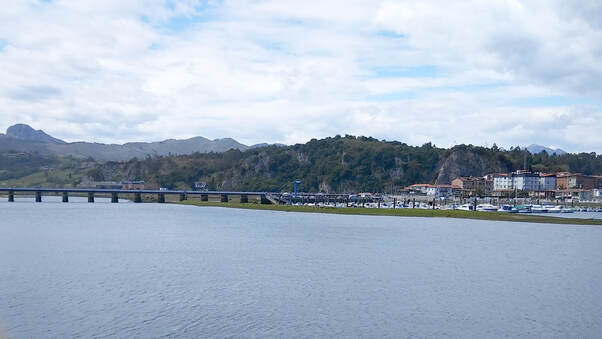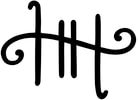 Ribadesella, Spain, looking towards the mountains where Tito Bustillo Cave is located. Ribadesella, Spain, looking towards the mountains where Tito Bustillo Cave is located. When I came home from Spain, I couldn’t stop thinking about my experiences in Tito Bustillo Cave. I decided to learn more about prehistoric civilizations and share what I learn with others. And I hope to be able to go back some day, not only to Tito Bustillo, but to many of the smaller caves in northern Spain I have learned about. In my studies, I find that a group of young spelunkers discovered the cave on the Thursday of Holy Week. One of the discoverers of the cave, Celestino Fernandez Bustillo, called Tito by his friends and only 18 years old, died three weeks later exploring another cave. They named this cave after him. In April 2018, the citizens of Ribadesella celebrated the 50th anniversary of the discovery of the cave. Because of these cave discoverers, I am motivated to dedicate myself to my life purpose. Because of the cave art creators, I am inspired to pursue beauty, truth, refinement, and excellence and share it with others. All figures in a cave were linked to one another in some way. In a previous post, I shared my transformative experience at Tito Bustillo Cave and started to walk you through a Personal Study Plan with the cave as a Core Source. In this post, we’ll go deeper--creating academic skills, applicational activities, and transformation! 4-Consider Questions and Quality Applications. Before studying your Core Source, make a list of questions you would like to have answered during your study. I call these Discovery Questions, and for Tito Bustillo Cave, they may include: Who is related to cave—creators, discoverers, researchers? Why is the discovery of this cave so important? What can I, or do I, want to learn as I study? (Make a list.) Where is this cave? When was this cave created and discovered? What is the context of the discovery of the cave? What has ongoing research found? Is there anything unusual about this cave that strikes me as I learn more? It’s fun to find the answers to these questions in the sources! Tito Bustillo has been a privileged cavern. So late a discovery (1968) was really lucky, for it made it possible to use new methods of study that provide lots of information with the help of approaches that were not available only a few years before . . . . Furthermore, it also allowed for new systems to protect the amazing rock art which had been confined inside the Tito Bustillo Cave for thousands of years. As you study, take notes of important ideas or quotes you want to remember. Also, note any Activities or other Applications that come to your mind. Create Thought and Discussion Questions to ponder and/or discuss with others later. Practice study skills by reading critically, annotating, discussing, writing, and applying what you have learned. Pull from your annotated list, and Consider each academic subject, as you create Quality Activities for your study of Tito Bustillo Cave. Some of those Activities may include:
5-Consecrate: BE the Change I always like to include service and personal growth in all my studies. In this way, I can “BE the Change I want to SEE in the world.” (Adaptation of a quote attributed to Gandhi.) What sort of service can you give or what personal growth can be accomplished as you study Tito Bustillo Cave? Maybe you can clean up an area around a cave near you, picking up litter or grooming trails. Or maybe you can discuss the positive attributes of discoverers or creators with a group and implement one or two of those attributes into your own life. This will, of course, need to be individually adapted to each person, family, or group, depending on priorities and interests. But don’t skip this step because it seems so simple or inconsequential. IT IS NOT! THIS is the reason for ALL education—to BE an agent of change in the world. The Magdalenians who drew these figures must have been very skilled to be able to do so with such a degree of realism. They used the natural shape of the rock for depicting some parts of the body. 6-Create Change: SEE the Change
Now, evaluate how your unit of study went. Did you SEE the Changes you wanted to See in yourself, your students, your family, your community, or beyond? What will you do differently in your next unit to add to or follow up with what you’ve learned? What is the next step you’d like to SEE in yourself and beyond? Plan your next unit of study with that in the forefront of your mind, because education is all about TRANSFORMATION! I hope you’ve enjoyed a glimpse at how to plan your own History is the Hook units, starting with one Core Source. If you’d like more ideas for resources and activities for Ancient World topics, check out History is the Hook: The Ancient World Subscription at the HIH School, https://historyisthehook.teachable.com/.
0 Comments
Leave a Reply. |
AuthorBonjour! I'm Bonnie. I love learning, travel, reading, writing, photography, and all things French. I am especially passionate about agency education, the humanities, and using history as the hook for all learning! Archives
July 2021
TopicsAll Agency How To How-to Mentoring |
|
©History is the Hook, 2021
|

 RSS Feed
RSS Feed